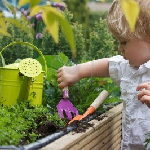 Laur Hesse Fisher Jun 11, 2014 05:29 |
@gharp
Thank you for your contest suggestion. This is a great idea!
Who do you think would be the primary audience for using these images, and, more importantly, how would they be made available to them? Would you be seeking images in this contest or ways to aggregate images?
Thanks!
Laur Fisher
For the Climate CoLab team
|
 Gabriel Harp Jan 15, 2015 01:37 | Proposal contributor
Apologies for the delay; I don't think I receive emails from the platform so I didn't see the comment.
To respond:
The target audience for using the images would be designers, marketers, journalists, researchers, and policy makers. These would be primarily advocates who are already "onboard" but who routinely use only words, symbols, and other abstractions to represent climate change and accompanying solutions.
The audience for the images themselves depends on the communicator's goals, and the images would have to be composed to match the needs and register of different audiences. For example, a polar bear isn't going to register with a North Dakota oil field family. It might, but more likely would be specific, actionable depictions of things that matter to them.
How would the images be made available? One could imagine a variety of platforms that could be designed, but a simple turnkey solution would be a flickr-like approach with images added to the feed and distributed either as public domain or with creative commons licenses.
I don't think the Climate Collab has the particular network to fund or curate these images, and the proposal might have to be more directed towards the design of a partnership program that would like, for example, photojournalists, instagramers, stock image repositories, environmental ngos, and other prospective contributors (and users). It would need curation, and it would need a style guide to ensure that the quality and composition of imagery was directive towards productive goals. One might also imagine a fund to support this effort, coordinated or brokered by news orgs that have an interest in quality communications resources.
|
